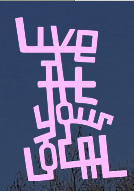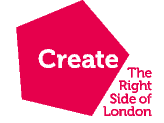Monday 23 November 2009
Akane Takayama, some background.
There is something about her art which draws the audience into a world which fascinates as much as it challenges. The detail at small scale in her work provides for a reality that somehow seems beyond our own world. This counter reality is always set within a form or shape which whilst appearing to be natural in form on further examination is actually nothing more than a construction of perspectives which seductively play on our imagination.
"Evolution" (2005) by Akane Takayama
Go To Akane's Web Site
Video Courtesy of Artists for Human Rights
Evolution expresses the distance between the primal rock of the earth and our ability to
communicate far beyond our own immediate environment. This distance between the
physical and the intellectual spaces is as vast and lonely as the deepest space.
Takayama's work carries the idea of juxtaposition, a dynamic between shapes, materials and construct which brings seemingly implausible connections together. The inspiration for her work comes from her identity of a person from one culture who has settled, lived and worked in another culture. As she has said, "If you leave the land and place of your birth to live in a culture that is alien to you then there has to be something wrong in your relationship with your cultural homeland."
This sense of 'something wrong' whispers constantly in Takayama's work. Her sculptures are possessed of clean precise lines which flow through the form with stunning precision. She places the incongruous into a harmonic partnership which is contained and made credible by the disciplined perspectives she always maintains. The questions which naturally spring from seeing her work are compelling however, when presented with the sculptures themselves, the viewer becomes drawn into a world of colour painted in a pallette made vibrant by the shadows created in the shapes.
Akane Takayama
Sunday 22 November 2009
DOG Sculpture 2010: Open Studio 20 11 2009
Everyone also had the chance to see her set of instruction videos that are now released on her web site. These are designed to assist the team of artist who will be making the final construction of the installation. In addition, the schools participating in the social inclusion element can also make use of these videos to initiate preparatory lessons prior to the workshop delivery.
All in all people had an interesting time and also got the chance to see some of Takayama's other sculpture work.
DOG Sculpture 2010: The Social Inclusion Element
The DOG sculpture project is first and foremost an art project by an establlshed London sculptor. The social inclusion element of this project is an additional benefit and a feature of the artist's ongoing commitment to inspiring youth to see art as an achievable career as well as assisting the sicially excluded to see art spaces as part of their own cultural space.
This committment is founded on the experience of being from the Japanese culture but living and working in London over the past 30 years as a representative of a minority community. Akane Takayama knows and understands the experience of feeling like an outsider, she knows and understands the struggle for women in certain cultures to assert themselves and most importantly she believes in fine art as a way of life.
The Social Inclusion element has one fundamental aim and that is to demonstrate to young people exacly how a public art sculpture is created and delivered and in so demonstrating create the belief in them that they could be artists. Alongside the idea of the inaccessibility of art there lies another strand where knowledge is lacking and that is exactly how an installation is conceived, planned, developed and installed. This lack of knowledge in the process further alienates the possibility of art as a career from the young mind; if you do not understand what it all entails then how can you possibly credibly aspire to be an artist?
Takayama and her team will be delivering workshops to selected classes of London primary schools in the art of model making. This essential skill which lies at the heart of any sculpture is a basis from which future development can be achieved. The workshops will be designed so that they follow introductions in earlier classes to the process of conception, design and construction in model making. The series of videos on Takayama's web site can be used by teachers as tasters before lessons on model making. As most classrooms have computers, digital projectors and whiteboards, it is a straightforeward task for the teacher to 'stream' the video for the children to watch before commencing a class in model making.
By the time that the artist delivers the workshop to the students they should already have a good idea of the materials, design, and construction method of an animal model of their choice. During the workshop they will have a chance to work with Takayama in the construction of their models and discuss the process of delivering a public sculpture.
Whilst it is always good to involve young people in art and open possibilities to them, nothing inspires them more than seeing their art on public display. Therefore the intention of the DOG Social Inclusion Project is that the models made with Takayama go on public display. This will give the children the opportunity to take their parents and families out into the community to see their own models. Working with museums, galleries and local businesses the DOG Social Inclusion Project will create an extended gallery within the community which will run prior to and in conjunction with the installation.
This community gallery will involve local arts facilities, local social facilities and local businesses with the event of the installation and demonstrate to the children that it is possible to get their art into the public eye. This will also provide an opportunity for the children to bring their families into cultural spaces they may not normally feel ownership of.
In addition, during the workshop delivery, the children will be asked to write a message of hope for the future. This message will be tied around the necks of the DOGS which are in the final installations. The idea of this element is to encourage the children to come to the installation with their families and seek out the DOG with their message around its neck. This creates another opportunity for the families to enter into a cultural space, that of a public art installation, which they would normally not feel was in their own cultural remit.
At the time that this description of the DOG Social Inclusion Project is written one museum, one large company represented across East London and several other institutions have expressed a clear interest to be involved in this project. In addition, suggestions have also been made to include adults from excluded communities and youth groups. All in all this project has a powerful dynamic of social value which is about to be realised because of two years of background work by Akane Takayama.
Thursday 19 November 2009
Akane Takayama, an artist in London
for the last twenty five years. She has exhibited at:
- Pomeroy Purdy Gallery, London (1992)
- Atlantis Gallery, London (1992)
- Daiwa Foundation, London (1995)
- Blue Gallery, London (1995)
- Mizuma Fine Art, Tokyo (1995)
- Henry Peacock Gallery, London (2001)
- Chelsea Physic Garden Sculpture Show, London (2002)
- Domo Ball Gallery, London (2002)
- Short listed for the Jerwood Drawing Prize (2002)
- Cafe Gallery Projects, London (2004)
- Space Open Exhibition London (2005)
- Sefton Open , Merseyside (2006)
Her work reveals the journey of an artist from one distinct cultural background developing her insights within the space of, what is for her, an alien cultural space. Throughout her work there is a tension between scale and perspective that creates a discourse on cultural iconography. To be an artist moving to a different culture as a young woman and then having to work hard, often in isolation, to establish herself both on the material and artistic levels provides an underlying strength to her work which provides real credibility.
video courtesy of Artists for Human Rights Channel
Akane Takayama,
there should be no way that we feel this sculpture to be an act of nature.
Takayama's work carries the idea of juxtaposition, a dynamic between shapes, materials and construct which brings seemingly implausible connections together. The inspiration for her work comes from her identity as a person from one culture who has settled, lived and worked in another culture. As she has said, "If you leave the land and place of your birth to live in a culture that is alien to you then there has to be something wrong in your relationship with your cultural homeland."
This sense of 'something wrong' whispers constantly in Takayama's work. Her sculptures are possessed of clean precise lines which flow through the form with stunning precision. She places the incongruous into a harmonic partnership which is contained and made credible by the disciplined perspectives she always maintains. The questions which naturally spring from seeing her work are compelling however and when presented with the sculptures themselves, the viewer becomes drawn into a world of colour painted in a pallette made vibrant by the shadows created in the shapes.
Akane Takayama
(b. 1957, Tokyo, Japan.)
"Antipathy" (2005) Akane Takayama
Go To Akane's Web Site
Video Courtesy of Artists for Human Rights






